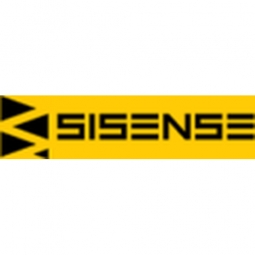Download PDF
Automating BI and ETL for Enhanced Enrollment: A MindMax Case Study

Technology Category
- Platform as a Service (PaaS) - Application Development Platforms
Applicable Industries
- Education
- Oil & Gas
Applicable Functions
- Sales & Marketing
Use Cases
- Leasing Finance Automation
- Material Handling Automation
The Challenge
MindMax, a company that partners with universities to increase enrollment, particularly among continuing education and adult learners, faced a significant challenge in scaling its customer base. The company's legacy analytics and BI solution required manual extraction of data from disparate sources, including Salesforce, Google Analytics, Facebook Ads, LinkedIn, and Marketing Automation systems. This process was time-consuming and inefficient, making it difficult to create meaningful reports and dashboards that incorporated data from all these different sources. The company's VP of Technology, Brian DiScipio, and Senior Business Analyst, Kiersten Warendorf, recognized the need for a cleaner, faster way to empower their customers with data-driven insights. They knew that the full automation of BI and ETL through the creation of a modern data pipeline and stack was crucial for the company's growth.
The Customer
MindMax
About The Customer
MindMax is a company that partners with universities to increase enrollment, particularly among continuing education and adult learners. The company provides its partner universities with data-driven insights that inform optimization of traffic and lead generation, empower administrators to maximize and manage enrollment, and guide potential students through the application and registration process. MindMax's customer base is primarily made up of universities and colleges that use varying software systems and technologies. The company's goal is to empower these institutions with actionable, data-driven insights at every step of the enrollment funnel.
The Solution
MindMax decided to implement the Sisense Data and Analytics Platform, which allowed them to pull in data from different sources, manipulate all of that data in one place, and present it simply in one chart or graph. However, to completely automate the ETL process, MindMax needed a wider variety of data connectors. They found the solution in Fivetran, a preferred Sisense platform partner known for simplifying data connectivity to high-performance data warehouses. Setting up Fivetran and Google BigQuery was quick and easy, and it instantly freed up a significant amount of Warendorf’s time, which she could dedicate to conducting analyses and generating insights. Fivetran brought all of MindMax’s data into one location, Google BigQuery, and the MindMax team used Sisense to create dashboards and analytics using this data.
Operational Impact
Quantitative Benefit
Related Case Studies.

Case Study
Taking Oil and Gas Exploration to the Next Level
DownUnder GeoSolutions (DUG) wanted to increase computing performance by 5 to 10 times to improve seismic processing. The solution must build on current architecture software investments without sacrificing existing software and scale computing without scaling IT infrastructure costs.

Case Study
Remote Wellhead Monitoring
Each wellhead was equipped with various sensors and meters that needed to be monitored and controlled from a central HMI, often miles away from the assets in the field. Redundant solar and wind generators were installed at each wellhead to support the electrical needs of the pumpstations, temperature meters, cameras, and cellular modules. In addition to asset management and remote control capabilities, data logging for remote surveillance and alarm notifications was a key demand from the customer. Terra Ferma’s solution needed to be power efficient, reliable, and capable of supporting high-bandwidth data-feeds. They needed a multi-link cellular connection to a central server that sustained reliable and redundant monitoring and control of flow meters, temperature sensors, power supply, and event-logging; including video and image files. This open-standard network needed to interface with the existing SCADA and proprietary network management software.

Case Study
Refinery Saves Over $700,000 with Smart Wireless
One of the largest petroleum refineries in the world is equipped to refine various types of crude oil and manufacture various grades of fuel from motor gasoline to Aviation Turbine Fuel. Due to wear and tear, eight hydrogen valves in each refinery were leaking, and each cost $1800 per ton of hydrogen vented. The plant also had leakage on nearly 30 flare control hydrocarbon valves. The refinery wanted a continuous, online monitoring system that could catch leaks early, minimize hydrogen and hydrocarbon production losses, and improve safety for maintenance.








